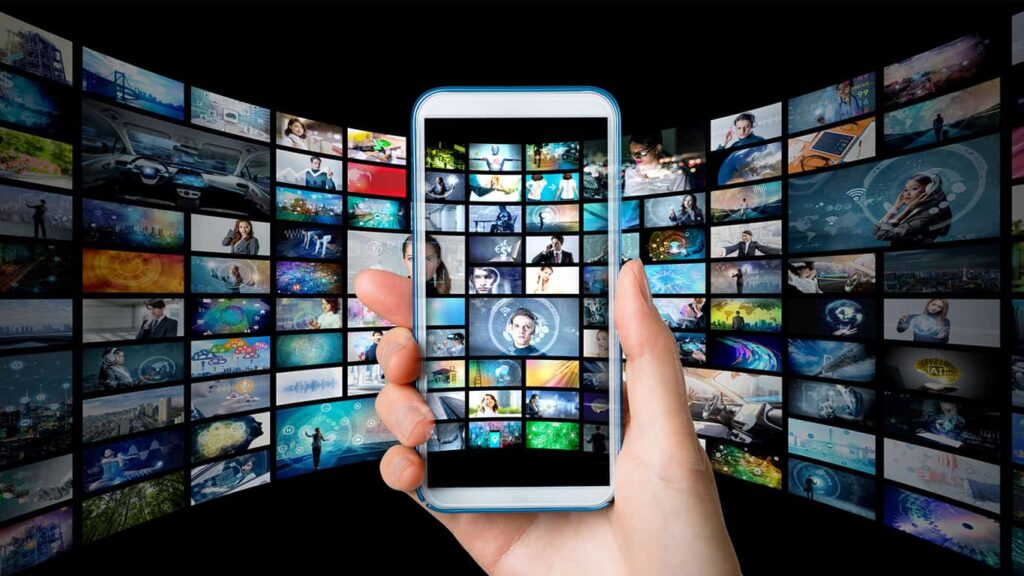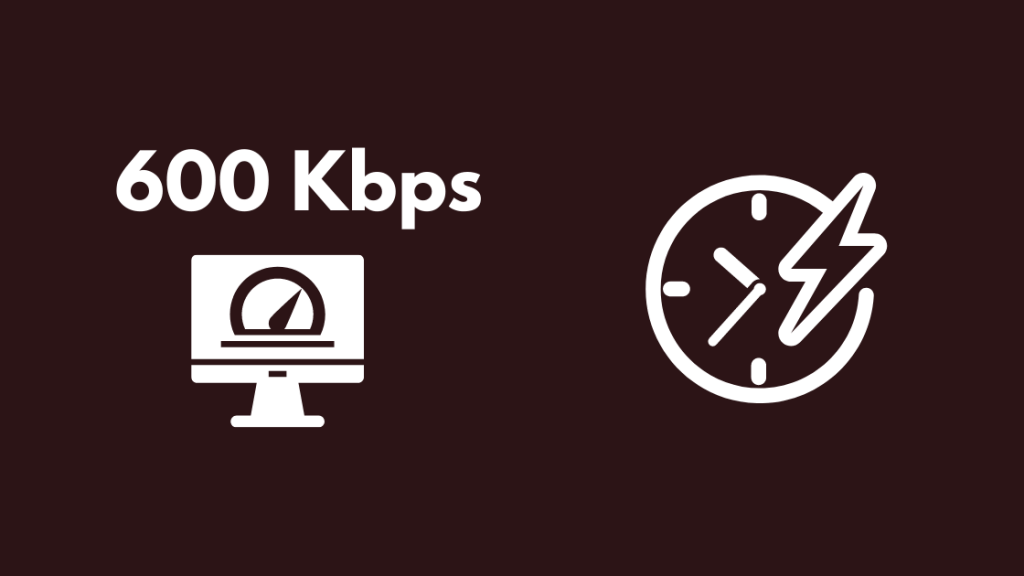600 Kbps is a slow internet speed by today’s standards. It’s equivalent to around 0.075 Mbps (megabits per second). This speed is not fast enough for most internet activities such as streaming videos, playing online games, or video conferencing.
How Fast Is 600 Kbps?
- Speed Comparison: A 600 Kbps (kilobits per second) connection is relatively slow compared to 1 Mbps (megabits per second), which is 1024 Kbps. Therefore, 1 Mbps connection offers greater speed than a 600 Kbps one.
- Internet Browsing: With 600 Kbps, you can smoothly browse text-based websites and check e-mails. However, loading image-heavy websites might take longer than usual.
- Video Streaming: Watching videos on platforms like YouTube or Netflix can be challenging with a 600 Kbps connection, as it would frequently buffer and lag.
- Online Gaming: Playing online games could be frustrating with 600 Kbps, as you might experience considerable lag and slow load times.
- Video Calls: Conducting 1-on-1 video calls on platforms like Zoom might be possible, but with reduced video quality and connectivity issues.
- Smartphone Apps: Messaging and music streaming apps may work well with 600 Kbps; however, apps requiring higher bandwidth, like Netflix and online games, could face issues.
- Data Cap: With a 600 Kbps connection, you might have to be cautious about your data usage and limit downloading large files or streaming high-quality videos.
- Multiple Devices: A 600 Kbps connection might not be ideal for households with multiple devices connected to the internet, as splitting the already slow bandwidth would result in slower speeds for each device.
Activities That Can Be Done with 600 Kbps
- Text-Based Browsing: With a 600 Kbps connection, you can easily browse websites that are mostly text-based, such as news articles and online forums.
- Check Emails: Reading, replying, and sending emails are possible with a 600 Kbps internet connection, as long as the attachments are not too large.
- Instant Messaging: Chatting on platforms like WhatsApp and Facebook Messenger should work smoothly with a 600 Kbps connection.
- Basic Social Media Usage: You can scroll through Facebook or Twitter feeds and view text-based content without much difficulty, although loading images and videos may take longer.
- Streaming Music: Listening to music on services like Spotify and Apple Music is possible, but you may experience occasional buffering.
- Downloading Small Files: You can download small files, such as a Word document or a PDF, but it may take longer compared to higher internet speeds.
- Basic Online Gaming: Playing simple browser games or mobile games with minimal graphics should be possible with a 600 Kbps connection, although more complex games may not run smoothly.
Understanding Bandwidth and Data Transfer Rates
Bandwidth and data transfer rates are essential concepts in networking and telecommunications:
- Bandwidth: Bandwidth refers to the maximum data transfer rate of a network or internet connection, often measured in bits per second (bps). It represents the “pipe” through which data travels. Higher bandwidth means more data can flow through at once, leading to faster downloads and uploads.
- Data Transfer Rates: Data transfer rates indicate how quickly data can be transmitted from one point to another, typically measured in bits per second or bytes per second. This term is often used interchangeably with bandwidth, but it can also refer to the actual speed of data transmission over a network.
- Units of Measurement: Common units include bits (b) and bytes (B), with 8 bits in 1 byte. For example, a 1 Mbps (megabit per second) connection can transfer data at a rate of 1,000,000 bits per second or 125,000 bytes per second.
- Real-World Application: Higher bandwidth enables faster downloads, smoother streaming, and quicker web page loading. For instance, a 100 Mbps connection is 10 times faster than a 10 Mbps connection.
- Factors Affecting Speed: Bandwidth is influenced by factors like the type of connection (e.g., DSL, cable, fiber), network congestion, and the quality of the infrastructure.
- Upstream vs. Downstream: Internet connections often have different upload and download speeds. For example, a 100/10 Mbps connection offers 100 Mbps for downloading and 10 Mbps for uploading.
- Latency: While bandwidth is about data transfer rate, latency is the delay between sending and receiving data. Low latency is crucial for activities like online gaming and video conferencing.
- Data Usage: Bandwidth limitations can affect data usage. For example, a 1 Mbps connection might struggle with high-definition streaming but work fine for standard-definition content.
What is Kbps?
Kbps stands for kilobits per second. It is a unit of measurement for data transfer speed. One Kbps is equal to 1,000 bits per second.
Examples of Kbps:
- Dial-up internet: Dial-up internet connections typically have a download speed of 56 Kbps.
- Music streaming: Streaming music at low quality typically requires around 128 Kbps.
- Video streaming: Streaming standard-definition video typically requires around 1 Mbps (1,000 Kbps). Streaming high-definition video typically requires around 3 Mbps (3,000 Kbps).
How Kbps affects your internet experience:
The speed of your internet connection (measured in Kbps, Mbps, or Gbps) affects how quickly you can download and upload data. For example, if you have a slow internet connection, it will take longer to download a large file or stream a video.
Here are some examples of how Kbps can affect your internet experience:
- Web browsing: If you have a slow internet connection, web pages may load slowly, and images and videos may take a long time to buffer.
- Email: Checking your email should be fine, but downloading large attachments may take a while.
- Streaming music: Streaming music at low quality may be possible, but buffering is likely. Streaming high-quality music or HD audio may not be possible.
- Streaming video: Streaming video at low quality may be possible, but buffering is likely. Streaming high-quality video or HD video may not be possible.
- Video conferencing: Video conferencing may be difficult or impossible, depending on the quality of the video call.
- Online gaming: Online gaming may be difficult or impossible, depending on the game and the number of players.
Mbps vs. Kbps
- Definition: When discussing internet speeds, the terms Mbps and Kbps often come up. Mbps stands for Megabits per second, while Kbps means Kilobits per second. Both are units of measurement for data transfer rates, with 1 Mbps equal to 1024 Kbps.
- Speed Comparison: Generally, Mbps is used to describe faster internet connections, while Kbps refers to slower ones. To put it in perspective, 600 Kbps is less than 1 Mbps, which makes it significantly slower than most modern internet connections.
- Streaming and Downloading: A higher Mbps enables faster streaming and downloading times. For example, Netflix recommends a minimum speed of 3 Mbps for SD streaming, making a 600 Kbps connection insufficient for smooth streaming experiences.
- Online Gaming: Faster internet speeds are essential for online gaming, as they ensure minimal lag and better overall performance. Most gaming platforms recommend an internet speed of at least 10 Mbps, which makes a 600 Kbps connection unideal for gamers.
- Voice and Video Calls: Platforms like Zoom suggest an internet connection of at least 1.1 Mbps for smooth video calls, again highlighting the limitations of a 600 Kbps connection.
Factors Affecting Internet Speeds

Your internet speed may depend on several factors. Here is a list of key aspects that can influence the speed offered by your Internet Service Provider (ISP):
- Bandwidth capacity: ISPs allocate a specific bandwidth to their users, limiting the amount of data one can consume at any given time. This results in varied internet speeds for different users.
- Network congestion: During peak hours or when multiple users access the internet simultaneously, the speed can significantly decrease due to network overload.
- Distance from the exchange: The further you are from the exchange, the weaker the signal strength and the slower the internet speed.
- Connection type: Your internet speed depends upon the type of connection you have – Dial-up, DSL, or Fiber-optic. Fiber-optic connections offer the fastest speeds.
- Hardware and software: Old or incompatible routers, modems, or devices can hinder internet speed. Ensure your hardware and software are updated for optimal performance.
- Data Cap: ISPs can implement data caps, throttling your internet speed when you approach the limit.
- Interference: Wi-Fi signals can be affected by electromagnetic interferences from other electronic devices, reducing internet speeds.
- Network throttling: ISPs may intentionally slow down speeds for specific services or users, impacting the overall performance.
Different Internet Speeds and Their Uses
- 600 Kbps: With this lower speed, you can perform basic tasks such as sending emails and instant messaging. You can listen to music on Spotify and watch YouTube videos at 240p. Gaming and video streaming platforms like Netflix aren’t suitable at this speed. You may also have a smooth experience in Zoom meetings without video.
- 3 Mbps: This speed is suitable for streaming content at SD 480p on platforms like Netflix. You can also browse social media, use messaging apps, and enjoy better-quality video calls on Zoom. However, online gaming may still not be ideal with this speed.
- 10 Mbps: With this increased speed, you can comfortably stream content in HD, download files faster, and perform a range of online tasks with minimal buffering. Online gaming becomes more accessible, and you can participate in high-quality video and group calls on Zoom.
- 25-50 Mbps: This speed range allows you to stream content in 4K, download large files quickly, and perform multiple tasks simultaneously without significant lag. You can now enjoy online gaming without any issues and participate in large group video calls with excellent quality.
- 100+ Mbps: Super-fast internet speeds above 100 Mbps enable seamless online experiences, with lightning-fast downloads and uploads, smooth streaming, and virtually lag-free online gaming. This speed is ideal for households and offices with multiple devices connected to the internet.
Conclusion
In conclusion, 600 Kbps internet speed is considered inadequate for most modern internet activities such as video streaming, online gaming, and heavy browsing. While it may be sufficient for light social media usage and checking emails, users seeking a seamless internet experience should consider upgrading to a higher speed, typically in the range of 5-10 Mbps or more. Verizon provides options such as Beyond Unlimited and Go Unlimited data plans, which can significantly improve your internet experience.
References:
https://robotpoweredhome.com/how-fast-is-600-kbps/
https://themescene.tv/internet/verizon-how-fast-is-600-kbps/
Hello, I’m Herman C. Miller, the founder of InternetPKG.com, your ultimate destination for all things Mobile Internet and Telecommunication Services. With a BSc in Telecommunication Services and over 6 years at AT&T, my passion for the industry led to this platform. At InternetPKG.com, we prioritize keeping you informed with the latest package offers, ensuring our content stays current. Our team, including a dedicated Internet Package and Mobile Data Plans Researcher, tirelessly researches emerging trends, identifies market opportunities, and provides expert product recommendations.
